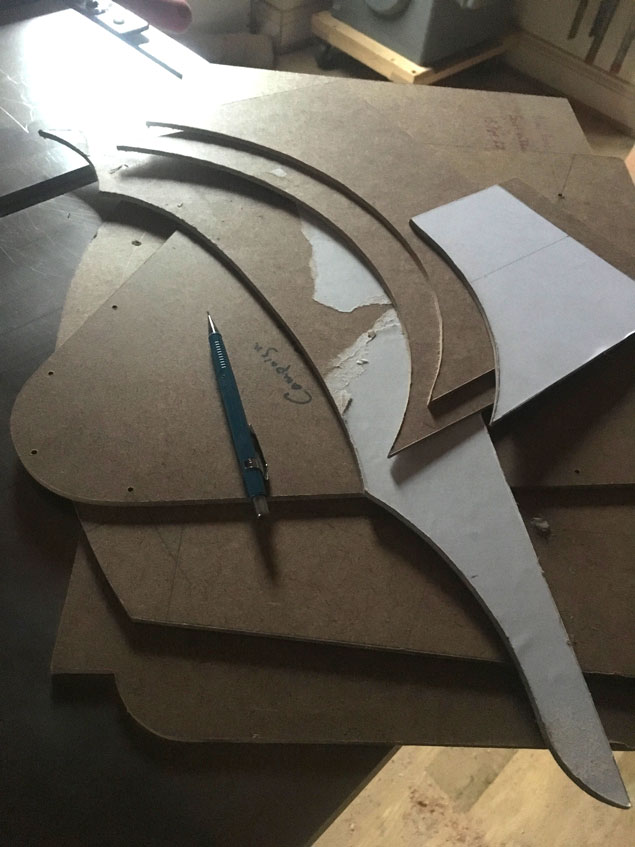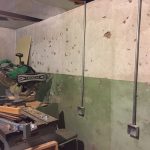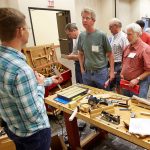We may receive a commission when you use our affiliate links. However, this does not impact our recommendations.
If I had the extra time and material, I’d build a full-blown prototype of every new design I create. Prototypes let you see in three-dimensions all the mistakes and awkwardness you cannot see on a two-dimensional plan. And fixing the design is usually obvious when you have a prototype on your workbench.
As much as I love prototypes, they are not always necessary or even possible. So here is what I do instead.
I make full-size hardboard templates of the major components I have questions about. These components are almost always the curved bits. Even if you are good at visualizing curves in your head, seeing the curve and the space it occupies is helpful.
Hardboard is cheap (a 2’ x 4’ sheet is less than $5). It works quickly and easily with hand tools and power tools. And once you perfect the curve, seat shape or whatever, you are left with a permanent record of the shape that can be used to lay out future components.
Also, hardboard templates don’t take up much space when you store them. The stuff I buy is 3/16” thick. As a result, I store about 10 years worth of patterns in a small nook behind some pipes in my shop.
Oh, a quick word about hardboard. It’s probably not what you think it is. Unlike a lot of engineered wood products, most varieties of hardboard are just wood fibers that have been exploded and then compressed – no additional glue or resin is added. “Tempered” hardboard simply has a thin layer of linseed oil on it. It’s been around since 1898 and is quite tool-friendly compared to other fiberboard sheet goods. Read more here.
— Christopher Schwarz
Here are some supplies and tools we find essential in our everyday work around the shop. We may receive a commission from sales referred by our links; however, we have carefully selected these products for their usefulness and quality.










Can I suggest a better solution is cad.
I use onshape.com.
It’s an online full blown cad system.
Free to use if your happy for your designs to be visible to the community.
Lots of great video tutorials.
Takes an little investment in time to learn but once you do you can rapidly prototype and visualise models including articulated models.
Fantastic to every designer should (must) have cad skills.
And no I’m not associated with on shape but I do love the product.
Brett
Hi, Chris,
I had the impression that materials like MDF wear tools more quickly but it sounds like you have different experience. I might have taken something out of context.
A couple of years ago I read a post about testing of Veritas PMV-11 steel and they used MDF as the test material. The page is here: http://www.pm-v11.com/TestingWear.aspx . This gave me the impression that MDF wears tools faster than solid wood, I’ve avoided it ever since. I used to use my electric router and table saw on MDF all the time, but I gave those up too (clouds of dust).
Do you think I should reconsider? It sounds like hardboard isn’t causing any problems for you. I don’t like sharpening but it may be worth the trade off for having a good set of patterns in my shop.
Thanks,
-Kurt